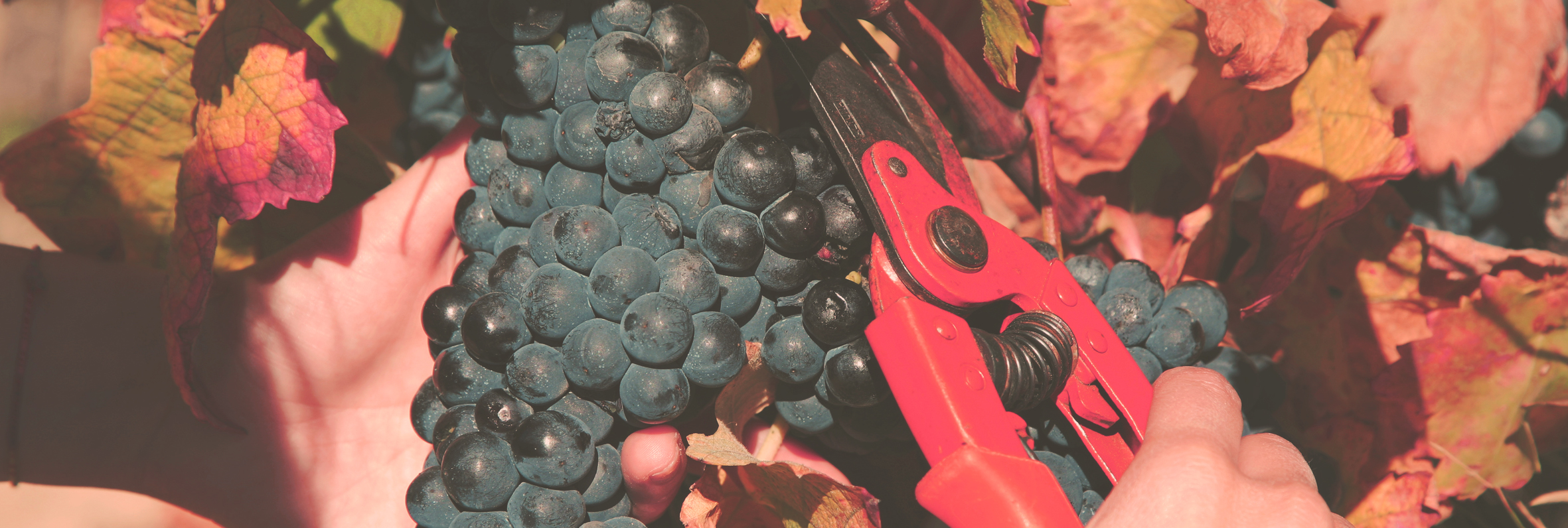
Spain harvest 2018
By Charlotte Levy
The Spanish harvest this year can be summed up as balanced.
In general, Spain didn’t experience the heatwave and sunshine that the majority of Northern Europe enjoyed in 2018. More moderate weather and mostly welcomed rainfall meant yields were around average, or slightly below, but quality throughout the regions is high and our producers are positive after a mixed 2017.
Here’s what our producers had to say:
Rioja
Bodegas Navajas
“2018 has put us back on track with a great year in terms of quantity and quality after the frost in 2017,” says head of exports Merche Navajas. Being strict with grape selection was key this year, and overall, they are very happy with the results so far. The first grapes to be hand-picked were Viura, White Tempranillo and Sauvignon Blanc on September 29, while the red grapes of Tempranillo, Grenache, Mazuelo and Graciano all ripened on the vine until the end of October.
“2018 is a classic vintage, like in the old days of Rioja,” she says. Lighter wines are to be expected, lower in alcohol than previous vintages, but of a high quality. This is also the first vintage for their Sauvignon Blanc and Grenache grapes, and so Navajas look forward to developing these new wines over the coming months.
Castilla y Leon
Protos (Ribera del Duero)
Overall, last year was colder than usual in Ribera del Duero. Bodegas Protos experienced a cold winter, a milder spring, but then a temperature drop again in May. The summer that followed continued this trend, adding in above average rainfall, yet the vines faired well through the tricky climate and remained healthy.
Vigorous pruning and parcel control have resulted in healthy, ripe bunches of grapes of above average yields. Harvest began slightly later than normal to ensure the grapes achieved full phenolic maturation, and marketing manager Ximena Lasa expects the wines to be concentrated and of high quality. They will be wines of “aromatic intensity – they will be good for ageing,” says Ximena.
Catalunya
Acustic Cellar (Priorat)
After a dry few years in Priorat, Enric Juan, winemaker at Acustic Celler, happily reports of rain in the spring that helped the vineyard regain its health after a difficult few years. “We had a nice ripening of the grapes and they are very healthy. This translates into an amazing year,” he says. Harvest returned to a more normal time frame this year; in 2017, harvest began at the end of August compared to the usual mid-September.
Enric is pleased that the health if the vineyards is back to full strength: “We are very happy with the vineyards, which are now stronger, and they have made beautiful, well-balanced wines that keep their intensity and power.”
Bodegas Tomas Cusine (Costers del Segre)
Rainy bursts throughout the winter, spring and end of harvest were a surprise for Tomas Cusine. Luckily, the altitude and good ventilation of the vineyards avoided any unwanted disease or saturation, and so the team welcomed the water in their usually dry vineyards.
A year best for the whites, Cusine report a good vintage overall. Only Macabeu, with its late-ripening nature, has needed thorough hand sorting – the other white varieties were very healthy. A harvest beginning at the start of September (like it did back in the 90s!) has resulted in good quality, medium alcohol and high acidity.
In the dry heat of early September, they picked their earlier-ripening red varieties. The sunshine helped the Merlot, Syrah and Tempranillo grapes to ripen fully, while maintaining high acid levels through earlier picking and keeping alcohol levels balanced.
The Garnacha (Grenache), Carinyena (Carignan) and Cabernets had to be picked quickly due to the unexpected rainfall during the second half of October. The Cabernet Sauvignon especially struggled to reach full phenolic maturity, but now in the winery things are looking positive. Reds of good concentration, colour and high acidity are expected, and Tomas Cusine look forward to well-balanced 2018 wines – especially compared to 2017.
Cave Llopartl (Subirats)
2018 was all about the vines recovering after the drought-induced stress of the previous year, and the water reserves were happily replenished. The vines had time to relax out of self-defence mode, and the healthy rainfall followed by a dry and warm summer meant the vegetative and ripening seasons went smoothly. “The vines, which had suffered the drought of the previous years, have rebounded with the rain and they now look vigorous and radiant,” says veteran oenologist Pere Llopart.
Strict winter pruning to limit yields has obtained grapes of great concentration, body and structure, and green pruning throughout the year also helped to produce quality fruit. “All in all, we have manually picked 750,000kg of grapes for cava, coming from 165 small plots,” he reports.
The prize grapes come from the highest vineyards of the Llopart family estate (380 meters above sea level), surrounded by a vast Mediterranean forest with a great biodiversity. The Macabeu, Xarel·lo and Parellada vines were planted between 40 and 65 years ago, and as a result they have very low yields. These collective plots are called Les Flandes dels Casots, and two special wines come from these vineyards: Llopart Ex·Vite and Llopart Original 1887, the single estate cavas that will age in the cellar for over 84 and 72 months, respectively.
“Now it is time to continue with the vinifications: after fermentation, we have a wide variety of wines to be tasted to de¬fine their characteristics. By doing so we will be able to decide and determine the different blends that will give every cava its distinctive personality,” concludes Pere Llopart.
Andalucia
La Guita (Sanluca de Barrameda)
The 2018 harvest in Pago Miraflores was similar to previous years, with exceptional quality of fruit. With its South-Western location, there’s huge influence from the Atlantic Ocean, leading to a slightly later harvest than the inland areas. With an even climate, generally moderate weather and some good rainfall through winter and spring, the year began well. A cool first half of summer was influenced by the Poniente winds, which brought cooler and more humid conditions to the vineyard. The picking of the grapes was therefore a little delayed and harvest began at the end of August/beginning of September. Nonetheless, La Guita are very happy with the quality of the resulting fruit.


